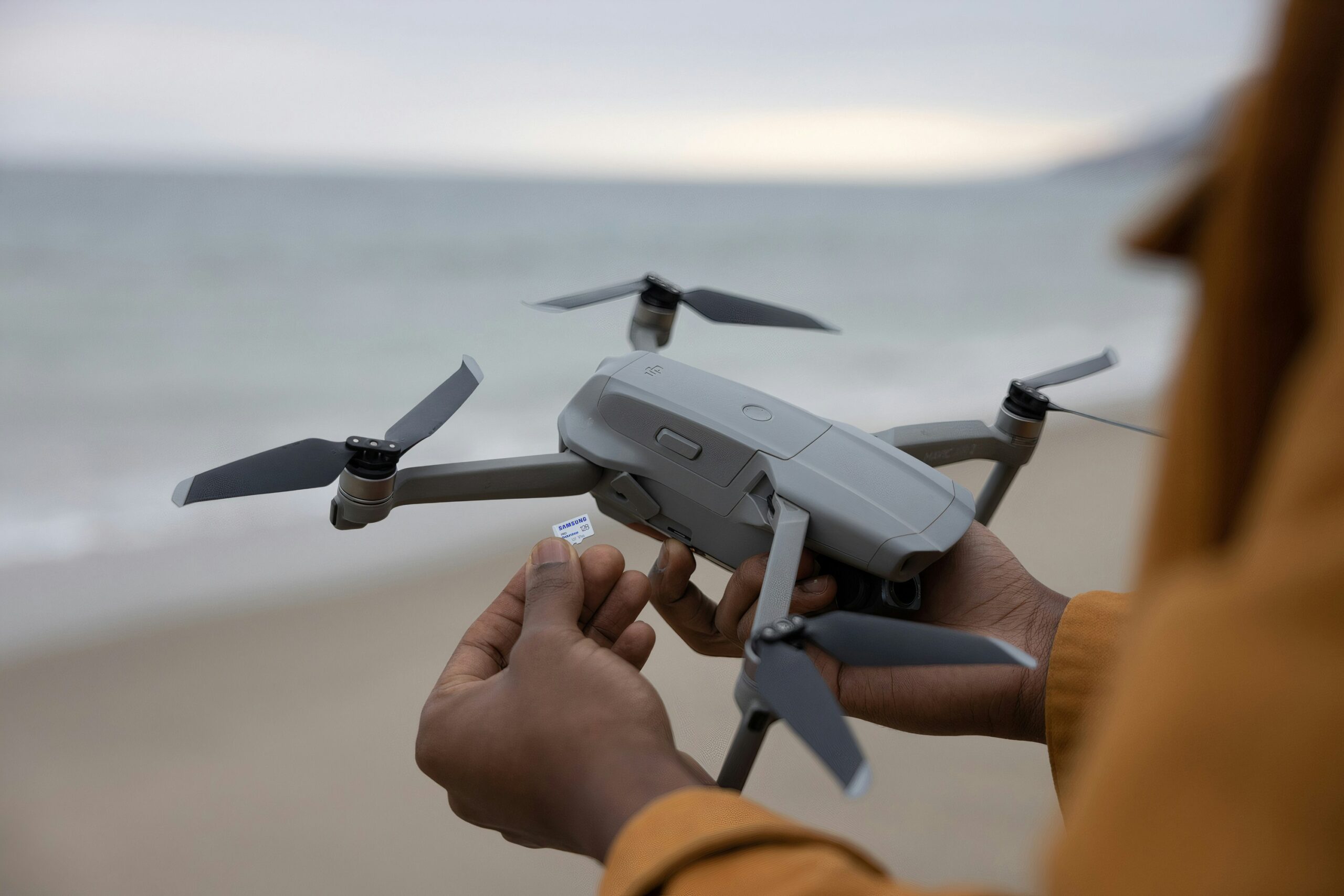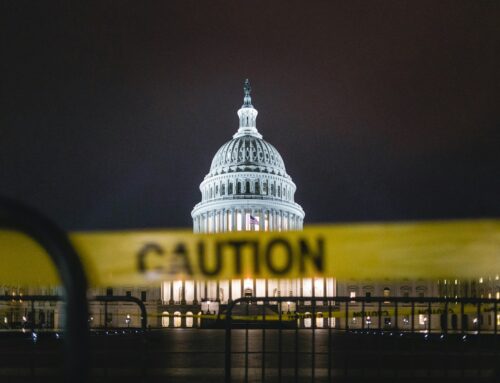You’ve waited years for routine BVLOS. Now the FAA has proposed Part 108 a draft rule intended to establish a scalable framework for beyond visual line of sight (BVLOS) drone operations in the United States.
The proposal is a significant step away from the waiver system, aiming instead to provide a consistent regulatory structure that can support commercial, public safety, and research applications at scale. The draft was published in August 2025, with a public comment period open until 6 October 2025 under docket number FAA-2025-1908.
We broke down what it says in our piece on Everything You Need to Know About the FAA’s New BVLOS Drone Rules, but there has been additional concern about operators risking getting sidelined. Let’s look at that here, so you can decide what to tell the FAA before the comment window closes.
What Part 108 Is Trying To Do
The FAA wants repeatable, scalable BVLOS. No more stitching waivers forever. A national framework instead of one-off approvals.
The NPRM (draft rule) aims to enable routine BVLOS at low altitudes for delivery, agriculture, surveying, public safety, training, demos, testing, and even recreation. It leans on a performance approach, not rigid checklists for every design. Instead, high-level outcomes with industry standards as “means of compliance.”
It also brings TSA into the loop. Certain BVLOS ops would need a TSA security program before you launch.
The Core Architecture: Permits, Certificates, and Categories
Part 108 gives you two main approval: Operating permits for smaller or limited fleets;
Operating certificates for larger, ongoing operations.
Permits come with caps and time limits. Certificates are heavier but scale further.
- If you want to do package delivery under a Part 108 operating permit, you can only register and operate up to 100 aircraft on that permit.
- If your delivery business grows and you need to fly more than 100 aircraft, the permit won’t cover it anymore.
- At that point, you would have to apply for a Part 108 operating certificate instead. Certificates are designed for larger-scale, ongoing operations and come with stricter oversight, more documentation, and additional requirements.
So, in short: permits are for smaller fleets; certificates are for larger fleets.
Your operation also sits in Categories 1–5. Each category stacks extra obligations.
- By Category 2, you run into radio restrictions (more below).
- By Category 3, you need strategic deconfliction.
- By Category 4, you also need a certificate
- By Category 5, you need DAA for non-broadcast aircraft too.
From “Pilot” To “Flight Coordinator”
Part 108 envisions a shift from manual piloting to system monitoring. The rule introduces the role of the “flight coordinator,” who oversees automated systems, intervening when necessary. The coordinator is not described as a pilot in the traditional sense.
The text even avoids the word pilot here. That’s deliberate, as the coordinator’s duties are different from manned pilots and Part 107 remote pilots.
You still need experience though.To serve as a flight coordinator, you must log 5 hours on the specific make and model within the last 12 months. Supervised training hours can count toward that initial five.This is where some operators pause.
So there is more emphasis on monitored automation.
Unlicensed Bands Are Out For Many Ops
One of the most notable changes involves radio communication.
Most commercial drones currently rely on unlicensed 2.4 GHz and 5.8 GHz spectrum under FCC Part 15 rules. However, Part 108 prohibits the use of these bands for Category 2 and higher operations. This restriction would require many operators to switch to licensed spectrum, cellular command-and-control links, or other compliant systems, requiring a significant technical and financial adjustment for many fleets.
Under the draft, Category 2 and above cannot use a command-and-control link that relies on devices operating under 47 CFR Part 15.
That’s a major retrofit for many fleets. It also part of the main industry concerns.
Strategic Deconfliction, Conformance Monitoring, and DAA
Part 108 weaves traffic services into operations.
From Category 3, you need an approved method for strategic deconfliction. That means coordination to avoid conflicts before they happen.
By the top category, you also need Detect and Avoid against non-broadcast aircraft. So you must handle traffic with or without electronic conspicuity.
The draft also seeds an ecosystem of Automated Data Service Providers under a new Part 146. Think UTM, surveillance feeds, C2 providers, conformance tools, and data exchange platforms. The FAA would authorise these providers at levels, with standards driving compliance.
For you, this implies subscriptions and integrations. You can’t d traffic planning solo after all. It becomes a networked service environment.
Registration Changes: No Part 48 For Part 108 Ops
Another change under Part 108 is registration. While drones under 55 pounds typically fall under Part 48’s simplified registration, BVLOS operations under Part 108 would require Part 47 registration, including an N-number assignment. This change increases administrative requirements for small drone fleets.
Manufacturer Responsibilities: Airworthiness “Acceptance,” Documents, and Audits
Part 108 doesn’t issue a classic airworthiness certificate.
Instead, the FAA would accept a manufacturer’s Declaration of Compliance if it meets Subparts G and H. That yields airworthiness acceptance and puts the model on an FAA list operators can reference.
Manufacturers must supply three key sets of documents: Operating instructions, maintenance instructions, and a configuration control document. They must also open doors for FAA-witnessed testing and independent inspections tied to accepted standards.
If a safety issue emerges, acceptance can be rescinded, including by emergency order.
There’s a 30-day window for the manufacturer to respond to a proposed rescission. This is the compliance spine for the aircraft you’ll fly. If your model never gets accepted, your BVLOS plan stalls.
TSA Touchpoints: Security Programs For Certain Ops
In the draft, FAA approval alone isn’t enough for package delivery conducted under Part 108—operators must also obtain a TSA-approved security program before flying:
- For permit-based package delivery: proposed §108.440(i) requires you to have a TSA security program in place;
- For certificate-based package delivery: proposed §108.565(f) repeats the same requirement for certificated delivery operations/
The NPRM also notes TSA is considering whether to expand security-program applicability beyond package delivery in the final rule and explicitly asks for public comment on which other BVLOS ops (if any) should require it.
Industry Concerns and DJI’s Response
While the draft is a step forward, manufacturers and operators have raised several concerns. DJI, one of the world’s largest drone manufacturers, has outlined seven key issues with the proposal:
1. Who qualifies for airworthiness acceptance
DJI argues the pathway would exclude most current drones, including DJI models, due to how the acceptance and oversight model is framed and the extra restrictions layered on common equipage. They call for performance-based acceptance that doesn’t hinge on origin or impractical obligations.
2. Automation over manual control
The draft prioritises highly automated, pilotless systems. DJI wants a path where human-in-the-loop operations still fit BVLOS risk models.
3. Radio rules
The Part 15 bar from Category 2+ would sideline aircraft using 2.4/5.8 GHz for C2.
DJI asks the FAA to keep 2.4/5.8 GHz viable for appropriate use cases.
4. Low-risk operations burdened
Agriculture and linear inspections might get weighed down by the same tools meant for dense, complex airspace. DJI wants scaled requirements for low-risk use cases.
5. Data reporting scope
DJI says the draft asks operators to share too much routine data with manufacturers or services. They want reporting scoped to safety incidents, not all operations.
6. Authorisations that don’t scale
DJI warns against site-by-site authorisations creeping back in. They want paths to broader, repeatable approvals across regions.
7. Registration changes
DJI pushes to keep Part 48 registration for sub-55 lb drones in BVLOS profiles. The draft would send those aircraft to Part 47 instead.
Industry press is echoing concerns too, flagging the Part 15 radio issue, scaling challenges, and likely hardware churn if the rule lands unchanged.
Potential Impacts by Sector
The effects of Part 108 will vary by sector:Where do these provisions bite first?
Agriculture crews using sub-55 lb platforms
You map fields beyond sight now under waivers. Your aircraft likely uses 2.4 or 5.8 GHz today. Under Category 2+, that C2 won’t qualify if it’s operating as a Part 15 device.
Switching to licensed spectrum or cellular C2 takes time and money.
Power-line and pipeline inspectors
Linear BVLOS is your bread and butter. Part 108 adds strategic deconfliction from Category 3. You’ll also need conformance monitoring and integrations with automated services. Those subscriptions and interfaces add cost and complexity.
Public safety teams
Emergency deviation authority is there. But you still have to fit the aircraft, radios, and training into the new box. If your platforms don’t get airworthiness acceptance, you can’t use them under 108.
Small newsrooms
News publishers note added hurdles for BVLOS newsgathering. Short-term permits, heavier reporting, and operational paperwork raise the bar.
Builders with unlicensed C2
If your command link relies on Part 15, Category 2+ is off limits. You’ll be stuck in lower-tier profiles or forced to re-engineer radios.
Operators banking on Part 48 registration
If your BVLOS plan uses small UA, you’ll move to Part 47. That’s extra admin for fleets and owners.
What The Draft Does Well (From An Operator’s View)
Despite its challenges, Part 108 has several strengths:
- Consistency over waivers: One framework beats endless exemptions.
- Clearer roles and training: Operations supervisors, flight coordinators, and recency standards lay a baseline.
- A supplier ecosystem: Authorised Automated Data Service Providers reduce bespoke integrations. They formalise UTM, deconfliction, and data exchange.
- Scalable approvals: Permits for entry and growth; Certificates for bigger fleets and long-term ops.
For many businesses, that’s a path forward. Not perfect, but better than standing still.
Where The Draft Overreaches (And How To Fix It)
You can ask for practical tweaks. Grounded, specific, and tied to safety outcomes.
1) Keep unlicensed bands viable where risk is low
The Part 15 ban at Category 2+ is sweeping. Ask the FAA for risk-based allowances with mitigations, especially in remote areas or corridors.
Propose guardrails like link monitoring, C2 performance envelopes, and fallback profiles.
2) Don’t sideline human-in-the-loop BVLOS
The draft rule favours monitored automation. But you can show safe human-directed BVLOS in defined contexts.
Propose profiles where a trained coordinator can actively command flight when needed. And still meet the same risk targets.
3) Scale burden to operation type and location
Linear, rural BVLOS is not downtown logistics. Ask for tiered requirements linked to population density and airspace complexity. The draft already references density categories. Build on that.
4) Preserve Part 48 where practical
If a sub-55 lb BVLOS profile fits the risk, argue for keeping Part 48 with added fields. That keeps admin light without sacrificing traceability.
5) Limit routine data uploads
Focus reporting on incidents, not every sortie. That reduces noise and protects business data, while keeping safety insight high.
6) Prefer broader authorisations over site-by-site
Push for regional or corridor approvals once you prove performance. That stops operational sprawl from drowning teams in paperwork.
7) Clarify manufacturer acceptance for diverse suppliers
Ask the FAA to state, in plain terms, that airworthiness acceptance is performance-based and origin-neutral. That keeps a wide supplier base in play, which supports safety and innovation.
How This Plays Out On Your Flightline
Let’s map this to tasks you actually do.
Planning a corridor inspection
You’ll pick a Category based on route risk and overflight.
From Category 3, you’ll need strategic deconfliction and likely conformance monitoring. You’ll integrate with an authorised data service for planning and coordination. If your C2 is on Part 15, you’ll need a new link strategy.
Launching a docked-drone site
Docked ops benefit from automation language. But you still need the aircraft accepted, the radios compliant, and staff meeting coordinator training and recency. Permits might work at first; certificates will scale later.
Standing up delivery
A permit can get you started, but it caps you at 100 aircraft.
You also have citizenship documentation requirements for certificate applications in delivery. Budget for the TSA piece too.
Converting a small UAS fleet
If you want BVLOS under 108, prepare for Part 47 registration.
Expect changes to manuals, training, maintenance logs, and configuration control. That’s how you’ll show compliance with the manufacturer docs and your company ops manual.
Example Of What To Say In Your Comment
You need specifics linked to safety. For instance, you can use this structure:
- Who you are: Type of ops, fleet size, airspace, people flown over.
- What you support: The move away from waivers, clear coordinator standards, and authorising data services.
- What blocks you: Call out Part 15 restrictions at Category 2+. Explain your current C2 performance, link budgets, and lost-link behaviours. Quantify impacts on cost and timelines.
- Your proposal: Suggest risk-based exceptions for rural corridors and low-density areas. Offer C2 performance metrics and fallback profiles that meet safety intent.
Ask the FAA to keep a path for human-directed BVLOS where appropriate. - Administrative relief: Advise keeping Part 48 for eligible sub-55 lb BVLOS with added fields. Ask for regional authorisations once performance is proven.
- Data scope: Support incident-focused reporting, not routine uploads to manufacturers.
Submitting Feedback On FAA Part 108 Draft Rule
Part 108 could open doors. It could also leave many on the sidelines. The technology path is clear in the draft: More automation. More services. More structure around design and operations.
But inclusion is a policy choice. It lives in details like radio rules, registration lanes, and scaled requirements. So, speak up now. Put your use cases on the record. Show your safety case. Offer workable edits.
Who gets left behind by the new rule? Right now, it’s anyone whose aircraft, radios, or workflows don’t fit the draft.
That doesn’t have to be you.
Tell the FAA what works. You have until 6 October 2025. After that, the window closes.
Submit your comments through the docket page for FAA-2025-1908 in a few minutes.






